
Steel Types Comparison
Steel is everywhere, shaping our world with its strength and versatility. But when it comes to choosing between alloy steel and stainless steel, the decision can feel overwhelming.
Alloy steel boasts enhanced toughness and wear resistance due to its multiple alloying elements. In contrast, stainless steel shines with its exceptional corrosion resistance thanks to at least 10.5% chromium content. Understanding these differences is key to selecting the right material for your project.
Dive deeper into the unique properties of each type of steel. Explore how their specific applications can impact your choice, whether you need durability in construction or hygiene in medical equipment. Your perfect material awaits!
Alloy steel has enhanced toughness due to multiple alloying elements.True
Alloying elements improve mechanical properties like toughness.
Stainless steel requires at least 10.5% chromium for corrosion resistance.False
Stainless steel needs at least 11% chromium content.
What Are the Key Differences Between Alloy Steel and Stainless Steel?
Choosing the right steel can be tough. Understanding the differences between alloy steel and stainless steel is crucial for your project’s success.
Alloy steel contains various elements that enhance its strength, toughness, and wear resistance. In contrast, stainless steel has at least 10.5% chromium, which gives it excellent corrosion resistance.
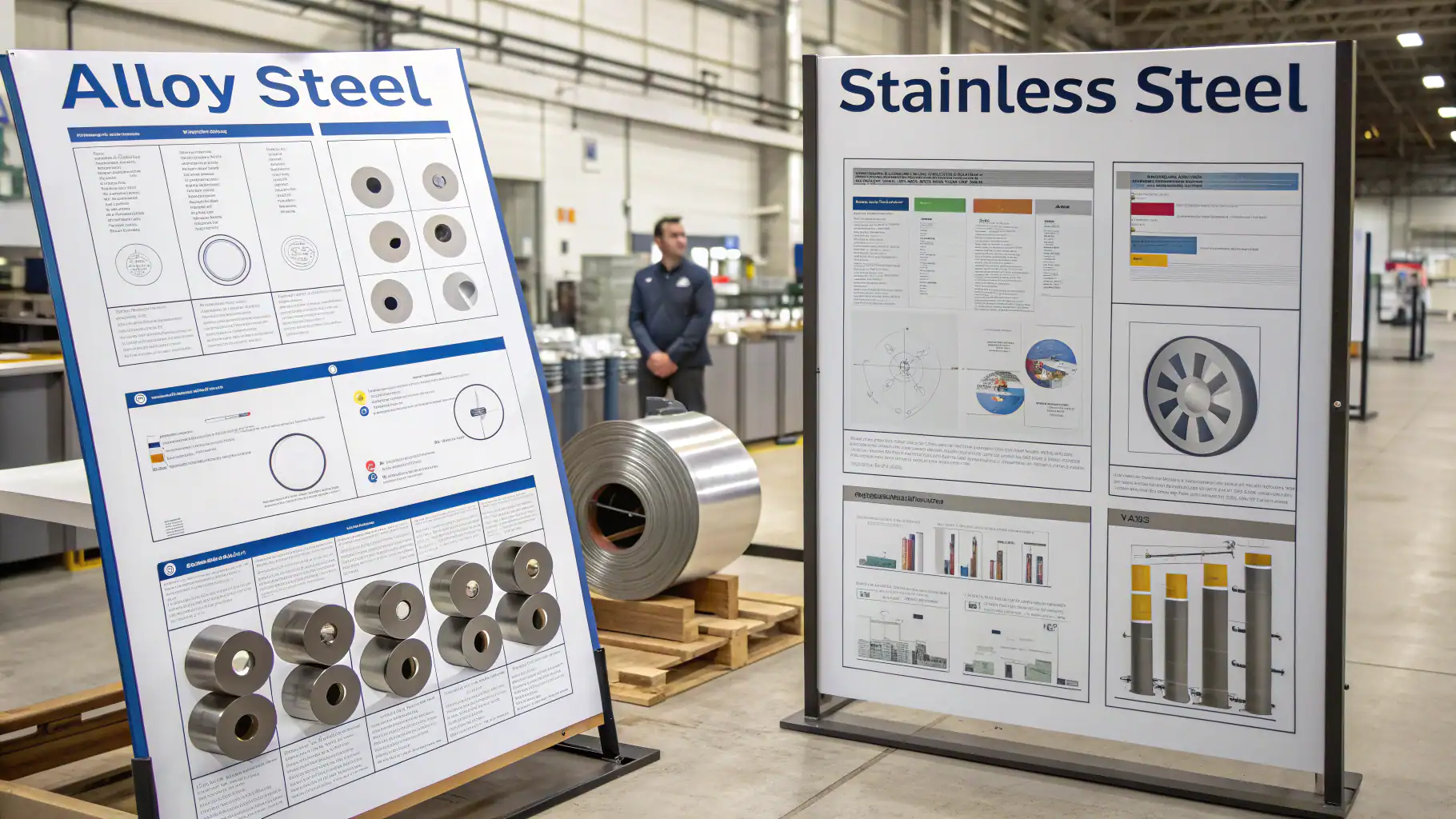
Alloy vs Stainless Steel
Composition of Alloy Steel vs. Stainless Steel
Alloy steel is made by adding elements like manganese, nickel, and chromium to carbon steel. These additions improve properties such as hardness and tensile strength. There are two main types: low-alloy and high-alloy steels. Low-alloy steels typically contain less than 5% alloying elements, while high-alloy steels have more.
Stainless steel primarily consists of iron with a minimum of 10.5% chromium content. This composition creates a protective oxide layer that prevents rusting and corrosion. Other elements like nickel or molybdenum may also be added to enhance specific properties.
Strength and Durability
When comparing strength, alloy steel generally offers higher tensile strength than stainless steel. For example, alloy steels can reach up to 960 MPa in tensile strength, while stainless steels usually max out around 621 MPa.
However, durability varies based on application needs. Alloy steels excel in high-stress environments like automotive or aerospace industries due to their toughness. Conversely, stainless steels are preferred in settings where corrosion resistance is critical, such as medical equipment or kitchenware.
Applications of Each Type
The applications for these two types of steel differ significantly due to their unique properties:
- Alloy Steel: Commonly used in construction machinery, automotive components, and tools requiring high strength.
- Stainless Steel: Ideal for food processing equipment, medical devices, and architectural structures where aesthetics matter.
Understanding these applications helps professionals select the right material based on project requirements.
Cost Considerations
Cost is another important factor when choosing between these materials. Generally speaking,alloy steel tends to be more affordable than stainless steel due to its simpler composition and manufacturing processes.
However, the long-term costs may differ based on maintenance needs.Stainless steel requires less upkeep because of its corrosion-resistant properties; thus it may save money over time despite a higher initial cost.
Maintenance Requirements
Maintenance plays a vital role in material selection as well.Alloy steels often need protective coatings or treatments to prevent rusting when exposed to moisture or harsh environments.
In contrast,stainless steels require minimal maintenance thanks to their inherent corrosion resistance. This makes them suitable for applications where cleanliness is essential—like hospitals or kitchens—where regular cleaning is necessary but rust could pose significant risks.
By understanding these key differences between alloy steel and stainless steel—composition,strength, applications,[cost considerations—and maintenance requirements you can make informed decisions for your projects.
Alloy steel generally offers higher tensile strength than stainless steel.True
Alloy steels can reach up to 960 MPa, while stainless steels max out around 621 MPa.
Stainless steel requires frequent maintenance due to rusting.False
Stainless steel's chromium content provides inherent corrosion resistance.
How Do Alloying Elements Enhance Steel Performance?
Alloying elements are the secret to stronger, tougher, and more corrosion-resistant steel. Discover how these elements transform ordinary steel into extraordinary materials for various applications.
Alloying elements like chromium, nickel, and manganese play a vital role in enhancing the performance of steel. They improve strength, toughness, and resistance to corrosion. This makes alloy steels suitable for demanding environments while stainless steels excel in hygiene-sensitive applications.
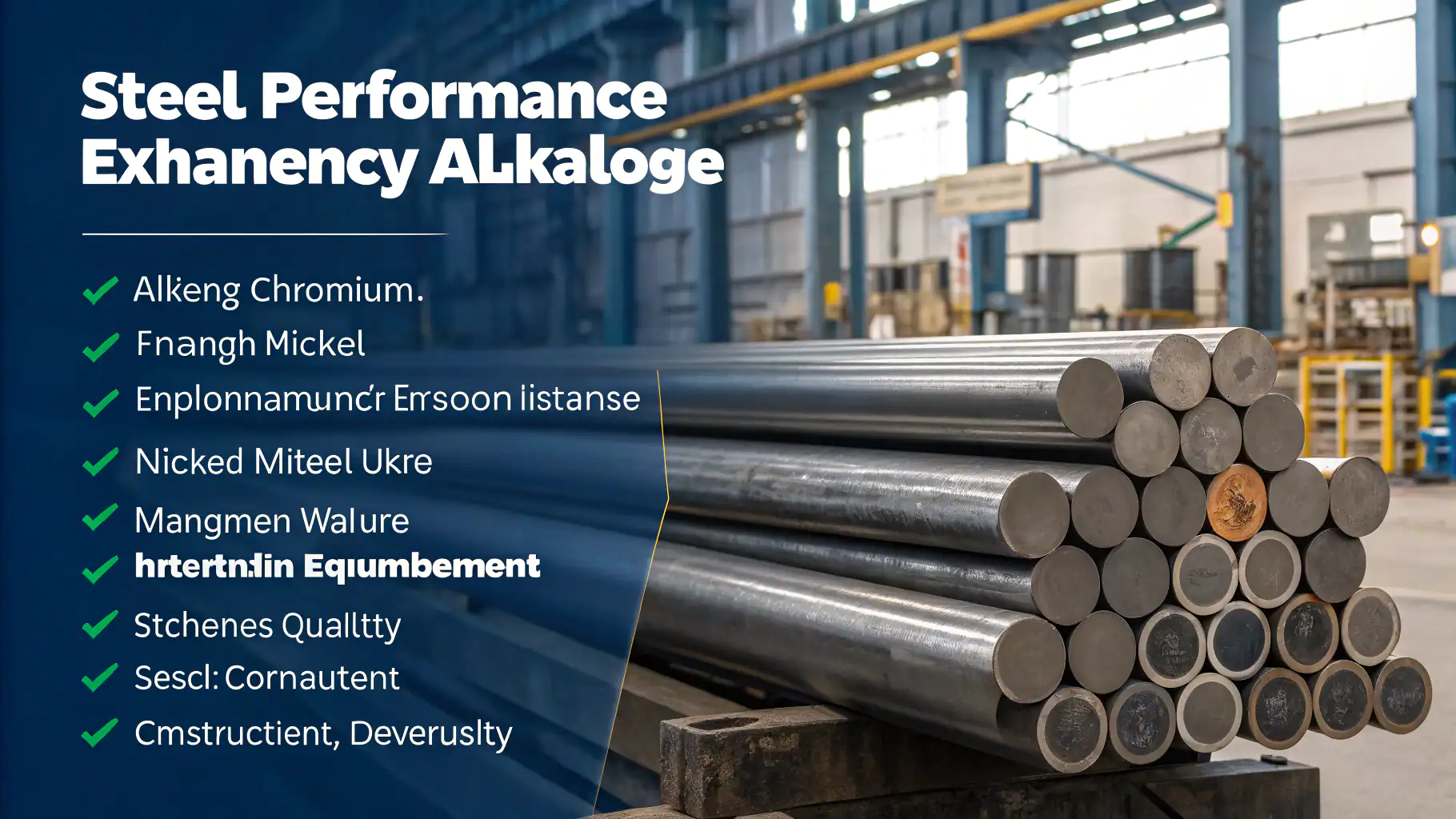
Alloying elements in steel
The Role of Chromium in Steel
Chromium is one of the most important alloying elements in steel. It significantly increases hardness and tensile strength. In stainless steel, chromium forms a protective oxide layer that prevents rust and corrosion. This property makes stainless steel ideal for use in medical equipment and kitchenware where cleanliness is crucial.
In alloy steels, chromium enhances wear resistance and toughness. For instance, high-chromium alloys are often used in tools and machinery that face heavy wear conditions. By adding chromium to steel, manufacturers can create materials that last longer under stress.
The Impact of Nickel on Toughness
Nickel is another key element that improves the toughness of steel. It helps maintain ductility at low temperatures, making it suitable for cryogenic applications. Nickel also contributes to overall strength without compromising malleability.
In addition to its toughness benefits, nickel enhances corrosion resistance when added to stainless steels. This combination allows for the creation of durable products that can withstand harsh environments while maintaining their structural integrity over time.
Manganese’s Contribution to Strength
Manganese plays a critical role in increasing the strength of carbon steels. It acts as a deoxidizer during production and helps refine grain structure within the metal. This results in improved hardness and tensile properties.
Moreover, manganese enhances wear resistance by forming hard carbides within the steel matrix. As a result, manganese-rich alloys are commonly used in construction equipment and automotive components where durability is essential.
Comparing High-Alloy vs Low-Alloy Steels
Steel can be categorized into high-alloy and low-alloy types based on the amount of alloying elements present. High-alloy steels contain significant amounts of elements like nickel or chromium which provide exceptional properties but may come at a higher cost.
Low-alloy steels typically have lower concentrations of these elements but still offer enhanced characteristics compared to plain carbon steel. They strike a balance between performance and affordability, making them popular choices for construction projects where budget constraints exist.
| Type | Alloying Elements | Key Properties | Applications |
|---|---|---|---|
| High-Alloy | > 5% total alloy content | Superior strength & corrosion resistance | Aerospace & medical equipment |
| Low-Alloy | < 5% total alloy content | Good strength & ductility | Construction & automotive |
Choosing the Right Steel for Your Needs
Selecting between alloy steel and stainless steel depends on specific project requirements such as environmental exposure or budget constraints. Alloy steels generally offer higher tensile strength but may require protective coatings against rust.
Conversely, stainless steels excel in corrosive environments with minimal maintenance needs due to their inherent properties from chromium content. Understanding these differences helps engineers make informed decisions tailored to their application needs across various industries.
Chromium increases hardness and tensile strength in steel.True
Chromium forms carbides, enhancing hardness and strength.
Nickel reduces the malleability of steel.False
Nickel maintains ductility while improving toughness.
In Which Industries Is Alloy Steel Most Commonly Used?
Alloy steel is a powerhouse in various industries. Its unique properties make it essential for demanding applications, ensuring safety and performance.
Alloy steel is primarily used in industries like automotive and aerospace due to its strength, durability, and versatility. These sectors benefit from alloy steel’s ability to withstand extreme conditions while maintaining structural integrity.
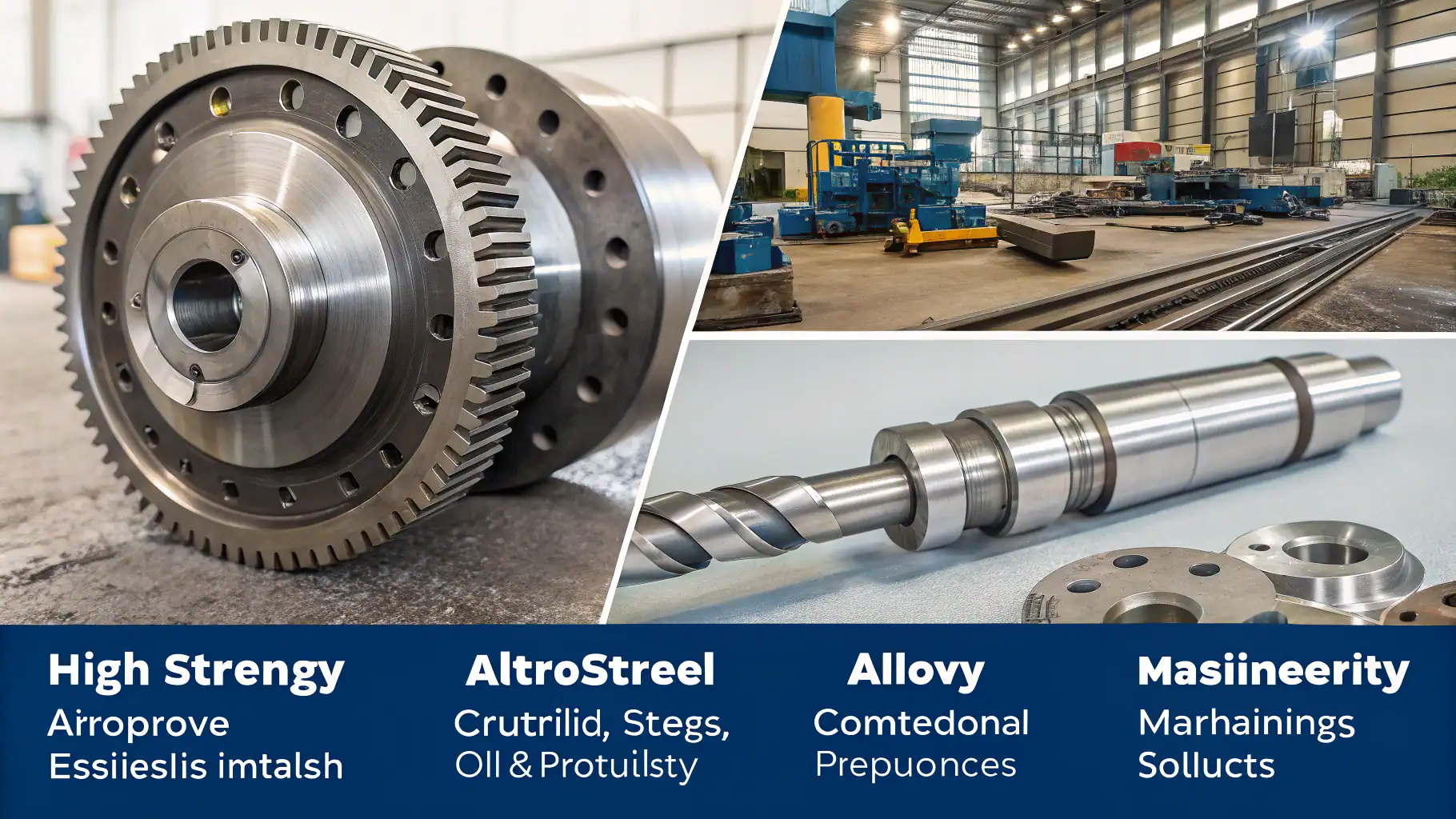
Alloy Steel Applications
Automotive Industry
In the automotive sector, alloy steel plays a crucial role in manufacturing components that require high strength and toughness. Parts such as gears, axles, and crankshafts often use alloy steel because it can handle heavy loads and resist wear over time. The material’s lightweight nature also contributes to fuel efficiency, making vehicles more economical. Additionally, alloy steels are customizable with different elements to enhance specific properties needed for various applications.
Aerospace Sector
The aerospace industry relies heavily on alloy steel for its exceptional strength-to-weight ratio. Components like landing gear, engine parts, and structural frames often utilize high-alloy steels to ensure safety during flight operations. These materials can endure extreme temperatures and pressures without compromising performance. Furthermore, the ability to tailor alloy compositions allows engineers to meet stringent regulatory standards while optimizing weight savings.
Construction Industry
In construction, alloy steel is favored for its durability and resistance to deformation under stress. It is commonly used in beams, columns, and reinforcements where structural integrity is paramount. The material’s toughness makes it suitable for heavy machinery components as well. Moreover, low-alloy steels provide a cost-effective solution without sacrificing quality or performance.
Oil and Gas Industry
The oil and gas sector benefits from alloy steel’s corrosion resistance when exposed to harsh environments. Pipes and valves made from this material are essential for transporting fluids safely across long distances. Alloy steels can be treated with coatings or other methods to enhance their resistance against corrosive substances found in these applications.
Manufacturing Sector
Lastly, the manufacturing industry utilizes alloy steel extensively in producing tools and machinery parts that require high hardness levels. This includes cutting tools, dies, and molds that must withstand significant wear during operation. The machinability of alloy steels allows manufacturers to create precise components efficiently while maintaining quality standards.
| Industry | Key Applications | Benefits |
|---|---|---|
| Automotive | Gears, axles | High strength & fuel efficiency |
| Aerospace | Landing gear & engine parts | Strength-to-weight ratio |
| Construction | Beams & reinforcements | Durability under stress |
| Oil & Gas | Pipes & valves | Corrosion resistance |
| Manufacturing | Tools & machinery parts | High hardness & machinability |
Alloy steel’s adaptability across these industries showcases its importance in modern engineering solutions.
Alloy steel is primarily used in automotive and aerospace industries.True
These sectors require high strength and durability.
Alloy steel's lightweight nature contributes to fuel efficiency.False
Alloy steel is not inherently lightweight.
Why Is Stainless Steel Preferred for Medical Equipment?
Stainless steel is the go-to choice for medical equipment due to its unmatched corrosion resistance and hygiene properties. This combination ensures safety and durability in healthcare settings.
Stainless steel is preferred in medical applications because it resists corrosion, making it safe and easy to clean. Its non-reactive nature prevents contamination, ensuring patient safety.
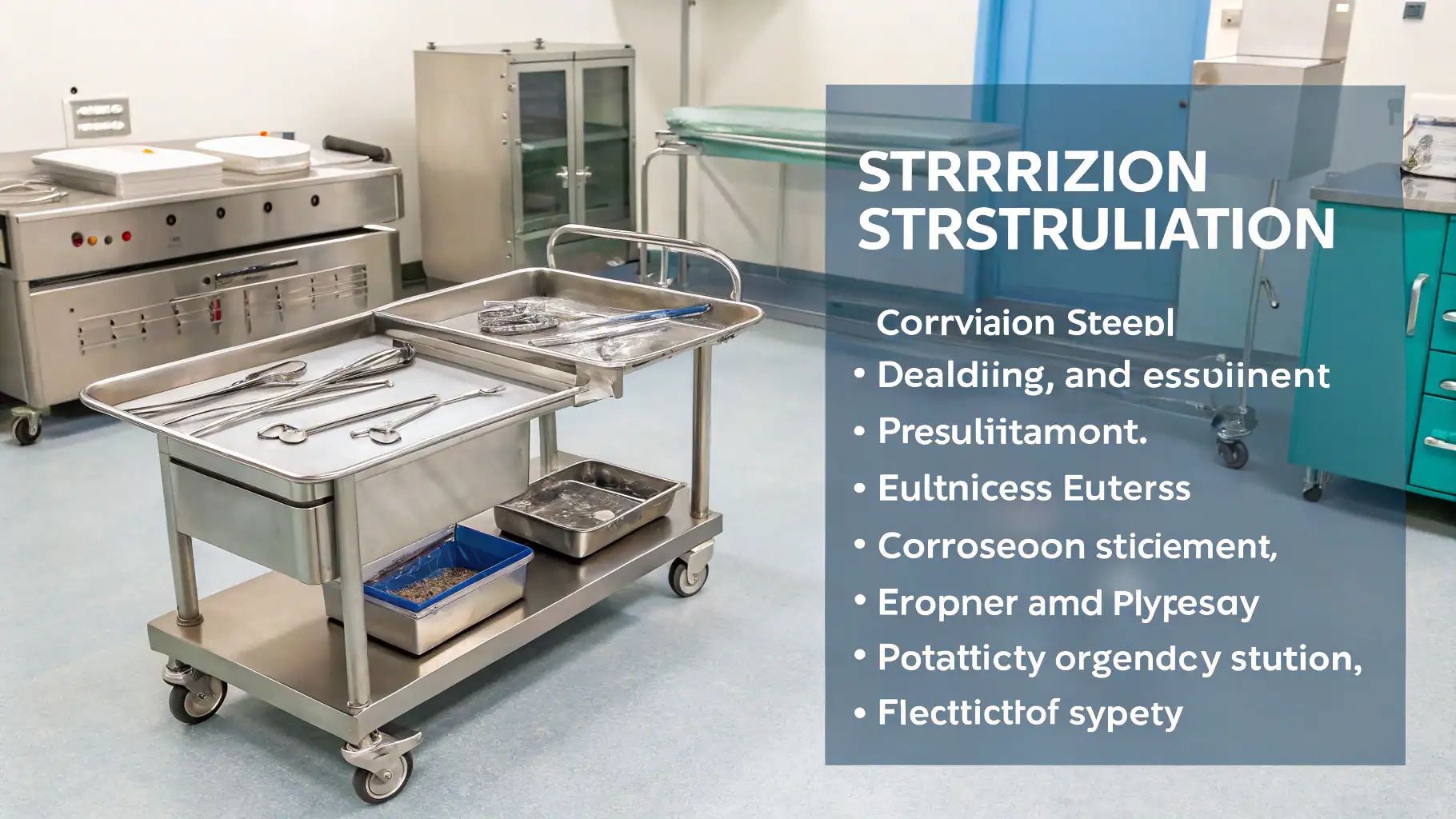
Stainless steel medical equipment
Corrosion Resistance
Corrosion resistance is one of the main reasons stainless steel is favored in medical equipment. Stainless steel contains at least 10.5% chromium, which forms a protective layer on its surface. This layer prevents rust and degradation from exposure to moisture and various chemicals found in medical environments. Unlike other materials, stainless steel maintains its integrity over time, reducing the risk of equipment failure or contamination.
In hospitals, instruments are often exposed to sterilization processes that involve high temperatures and harsh chemicals. Stainless steel withstands these conditions without losing its properties. This durability leads to lower maintenance costs and longer service life for medical tools.
Hygiene Properties
Hygiene is critical in healthcare settings, where infections can have serious consequences. Stainless steel’s smooth surface makes it easy to clean and sterilize effectively. Bacteria cannot easily adhere to stainless surfaces, reducing the risk of cross-contamination between patients.
Moreover, stainless steel does not absorb fluids or harbor bacteria like some other materials might. This characteristic makes it ideal for surgical instruments, implants, and hospital furniture where cleanliness is paramount.
Strength and Durability
While corrosion resistance is vital, strength also plays a significant role in material selection for medical equipment. Stainless steel offers excellent tensile strength compared to many alternatives. It can endure heavy use without bending or breaking.
This strength allows manufacturers to create thinner yet durable designs for surgical tools or devices that require precision engineering without compromising safety or effectiveness.
Cost-Effectiveness
Although stainless steel may have a higher initial cost than some other materials, its long-term benefits often outweigh this expense. The durability means less frequent replacements are needed over time. Additionally, reduced maintenance requirements lead to lower operational costs.
When considering total lifecycle costs—initial purchase price plus maintenance—stainless steel proves itself as a cost-effective solution for medical applications.
Versatility in Applications
Finally, stainless steel’s versatility makes it suitable for various medical applications beyond just surgical instruments. It is used in everything from hospital furniture to imaging machines due to its ability to meet stringent health regulations while providing aesthetic appeal.
The adaptability of stainless steel allows manufacturers to innovate continuously while ensuring compliance with health standards across different types of medical equipment.
Stainless steel resists corrosion, making it safe and easy to clean.True
Chromium in stainless steel forms a protective layer.
Stainless steel absorbs fluids, harboring bacteria.False
Stainless steel's smooth surface prevents fluid absorption.
What Factors Should You Consider When Choosing Between These Steels?
Choosing the right steel can be overwhelming. Different types have unique properties that affect performance, cost, and maintenance. Understanding these factors is key to making the best choice.
When selecting between alloy steel and stainless steel, consider environmental exposure, cost, and maintenance needs. Each factor significantly influences your decision based on specific project requirements.
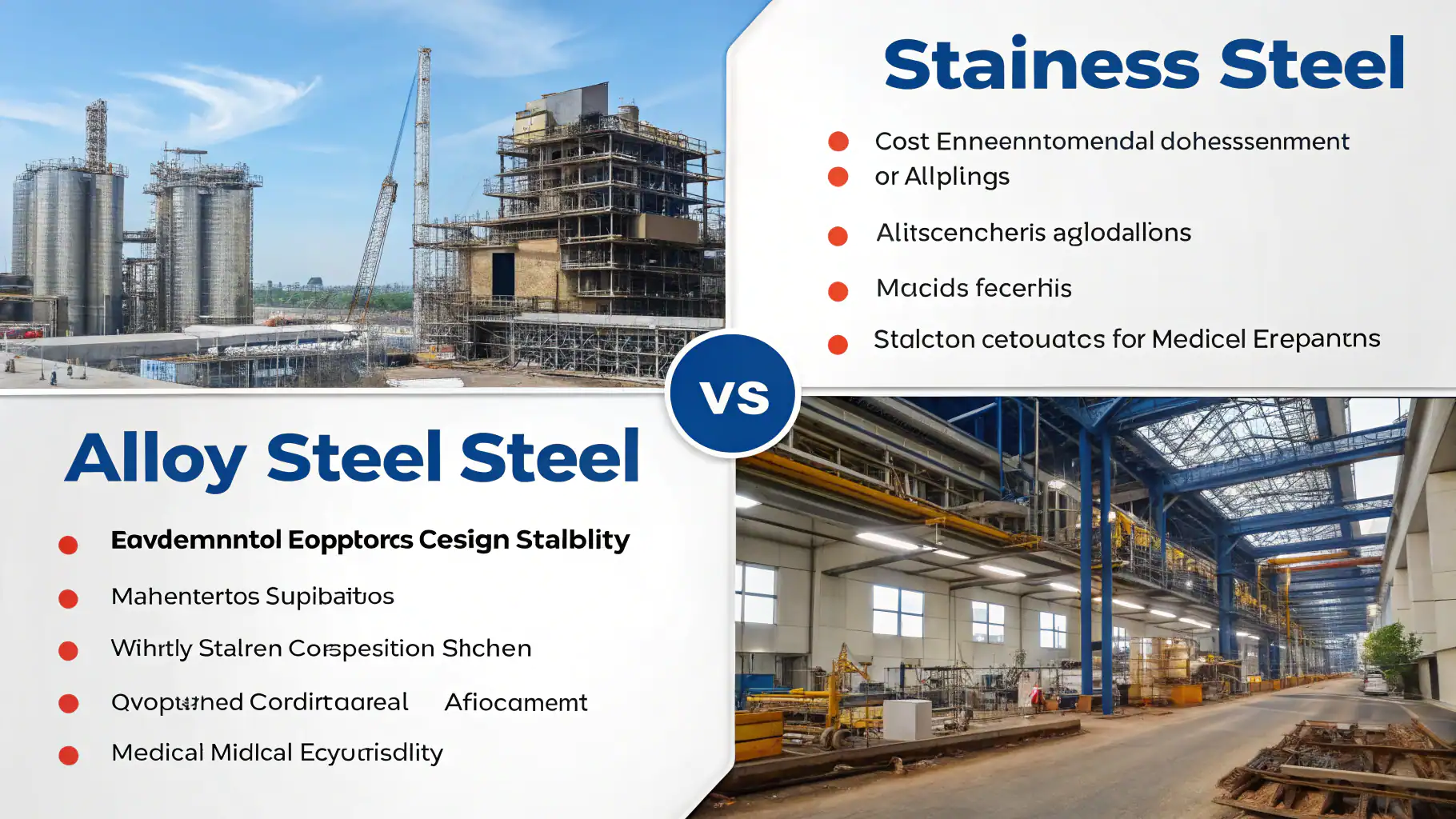
Alloy vs Stainless Steel
Environmental Exposure
Environmental conditions play a crucial role in material selection. Alloy steel is prone to rust when exposed to moisture unless treated with protective coatings. This makes it less suitable for humid or corrosive environments. In contrast, stainless steel contains at least 10.5% chromium, which provides excellent corrosion resistance. It is ideal for applications in kitchens or medical settings where hygiene is critical.
Cost Considerations
Cost is often a deciding factor when choosing between these steels. Generally, alloy steel tends to be more affordable than stainless steel due to its simpler composition and manufacturing process. However, the initial savings may come at a long-term cost if alloy steel requires frequent maintenance or replacement due to corrosion issues. Therefore, it’s essential to weigh upfront costs against potential future expenses related to upkeep.
Maintenance Needs
Maintenance requirements differ significantly between alloy and stainless steels. Alloy steel may need regular inspections and protective treatments to prevent rusting over time. This can increase overall operational costs and downtime for repairs or replacements. On the other hand, stainless steel typically requires minimal maintenance due to its inherent corrosion resistance and durability, making it a more convenient option for many applications.
Application Suitability
The intended application greatly influences the choice of material as well. Alloy steels are often used in construction and automotive industries where high strength is required but may not face harsh environmental conditions. Conversely, stainless steels are preferred in food processing equipment and medical devices where cleanliness and corrosion resistance are paramount.
| Factor | Alloy Steel | Stainless Steel |
|---|---|---|
| Corrosion Resistance | Low | High |
| Cost | Lower | Higher |
| Maintenance | Higher (frequent) | Lower (minimal) |
| Typical Applications | Automotive, Construction | Medical Equipment, Kitchenware |
By considering these factors—environmental exposure, cost implications, maintenance needs, and application suitability—you can make an informed decision on whether alloy or stainless steel best meets your project’s demands.
Alloy steel is less suitable for humid environments due to rust.True
Alloy steel lacks inherent corrosion resistance like stainless steel.
Stainless steel requires frequent maintenance due to rusting.False
Stainless steel's chromium content provides excellent corrosion resistance.
How Can Expert Services Assist in Material Selection for Your Projects?
Choosing the right material can make or break your project. Expert services simplify this process, ensuring you select materials that meet your specific needs.
Professional CNC machining services help you choose the right material by analyzing your project requirements. They consider factors like strength, durability, and cost to guide you effectively.

Alloy vs Stainless Steel
Understanding Alloy Steel and Stainless Steel
Alloy steel and stainless steel are two popular choices in manufacturing. Alloy steel contains various elements like chromium and nickel, enhancing its strength and toughness. It is often used in automotive and construction industries due to its high tensile strength. On the other hand, stainless steel has at least 10.5% chromium, which provides excellent corrosion resistance. This makes it ideal for medical equipment and kitchenware where hygiene is crucial.
Key Properties of Alloy Steel
Alloy steel offers several advantages. It typically has a higher tensile strength than stainless steel, making it suitable for demanding applications. For instance, high-alloy steels are used in aerospace due to their strength-to-weight ratio. However, alloy steels may rust without protective coatings, which can be a drawback in certain environments.
| Property | Alloy Steel | Stainless Steel |
|---|---|---|
| Tensile Strength | Higher (up to 960 MPa) | Lower (up to 621 MPa) |
| Corrosion Resistance | Moderate | Excellent |
| Cost | Generally lower | Generally higher |
Advantages of Stainless Steel
Stainless steel shines when it comes to corrosion resistance. Its composition allows it to withstand harsh environments without rusting or degrading over time. This property makes it a preferred choice for industries such as food processing and healthcare where cleanliness is vital.
Additionally, stainless steel requires less maintenance compared to alloy steel because of its protective oxide layer formed by chromium content.
Factors Influencing Material Choice
When selecting between alloy steel and stainless steel, several factors come into play:
- Environmental Conditions: If the application involves exposure to moisture or chemicals, stainless steel may be more suitable.
- Strength Requirements: For projects needing high strength under stress, alloy steel could be the better option.
- Cost Considerations: Budget constraints might lead you towards alloy steel since it’s generally more affordable.
- Aesthetic Preferences: In applications where appearance matters, stainless steel’s finish can provide an edge.
The Role of Expert Services
Expert services like those offered by AT-Machining can significantly aid in material selection for your projects. They assess your specific needs based on application requirements and environmental conditions while providing insights into material properties and costs.
By leveraging their expertise, you can make informed decisions that align with both performance expectations and budgetary constraints—ensuring project success from start to finish.
Alloy steel typically has higher tensile strength than stainless steel.True
Alloy steel can reach up to 960 MPa, higher than stainless.
Stainless steel requires more maintenance than alloy steel.False
Stainless needs less maintenance due to its oxide layer.
Conclusion
Alloy steel offers strength and affordability, while stainless steel excels in corrosion resistance and hygiene. Choose based on application needs and cost considerations.


